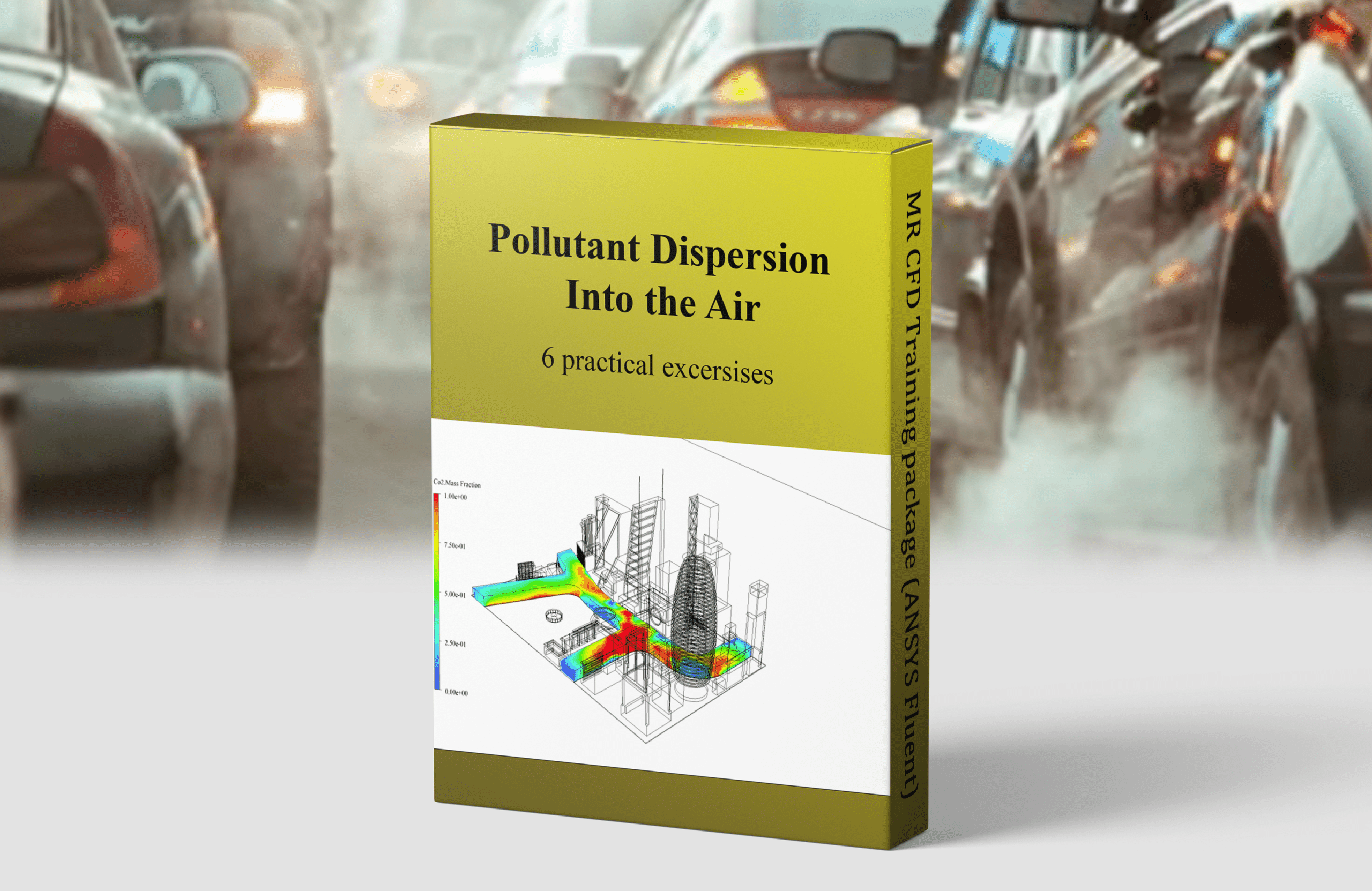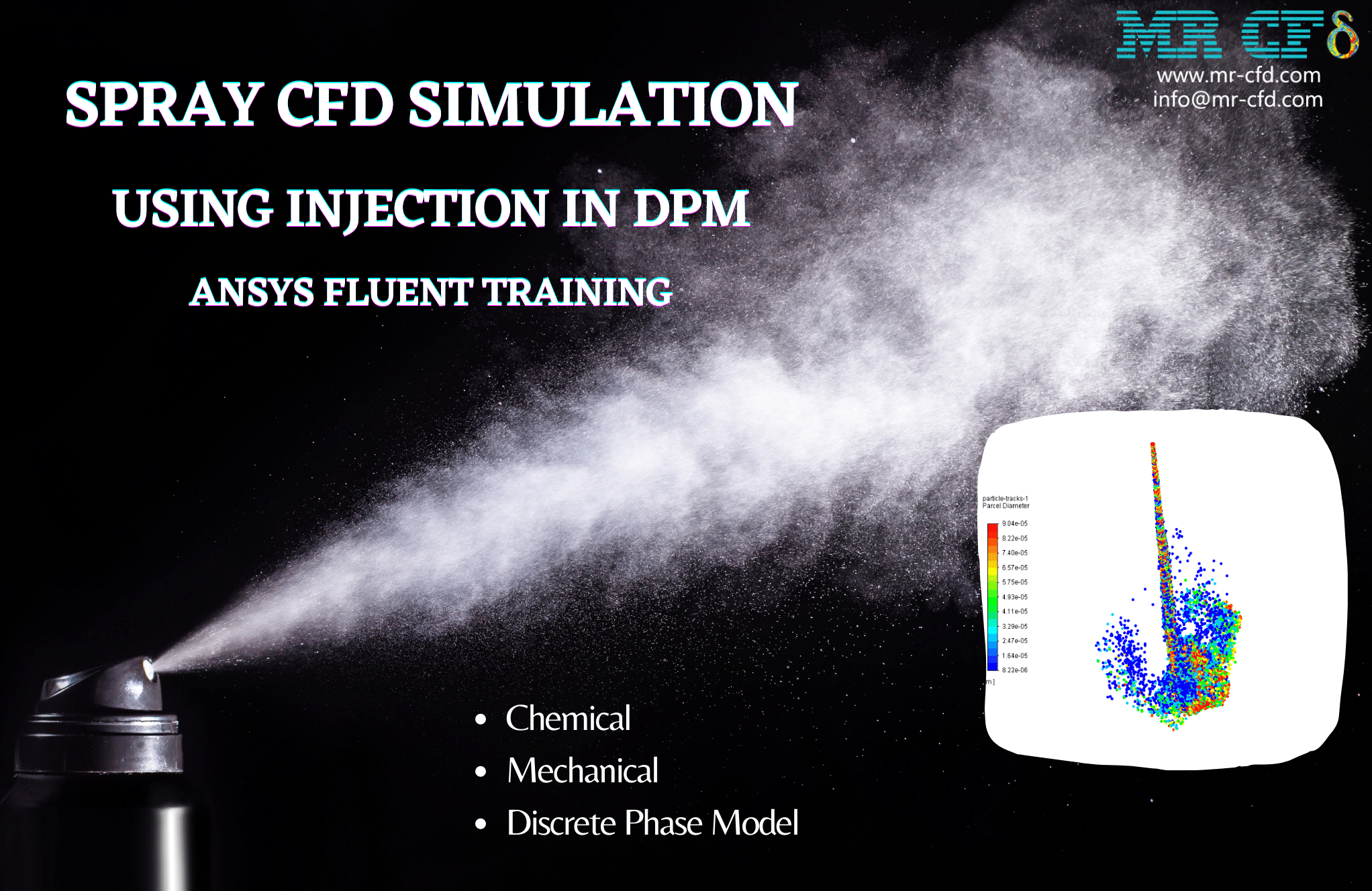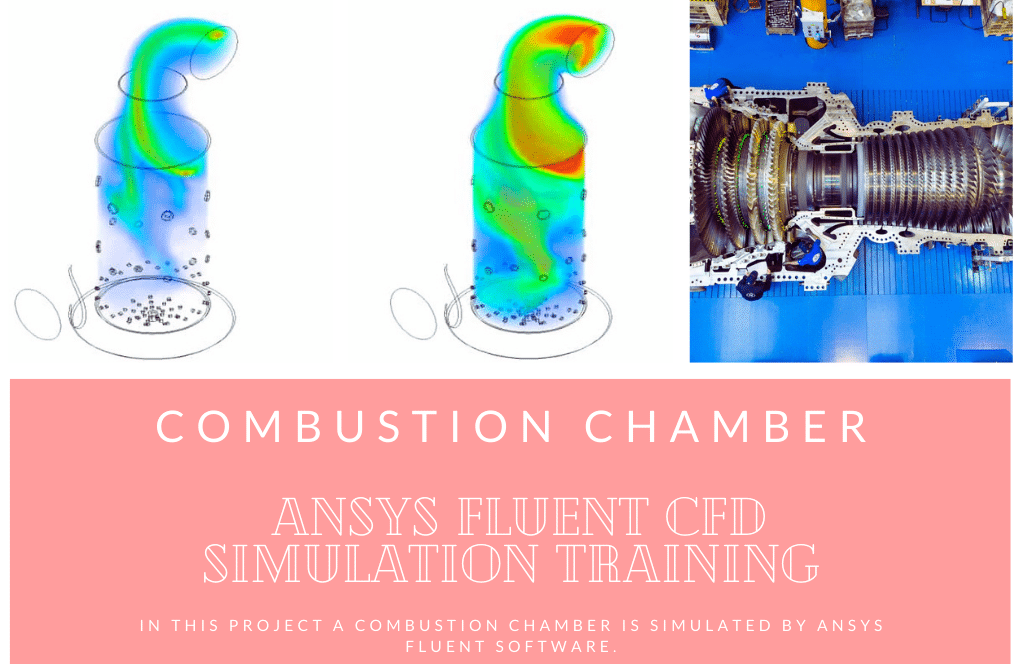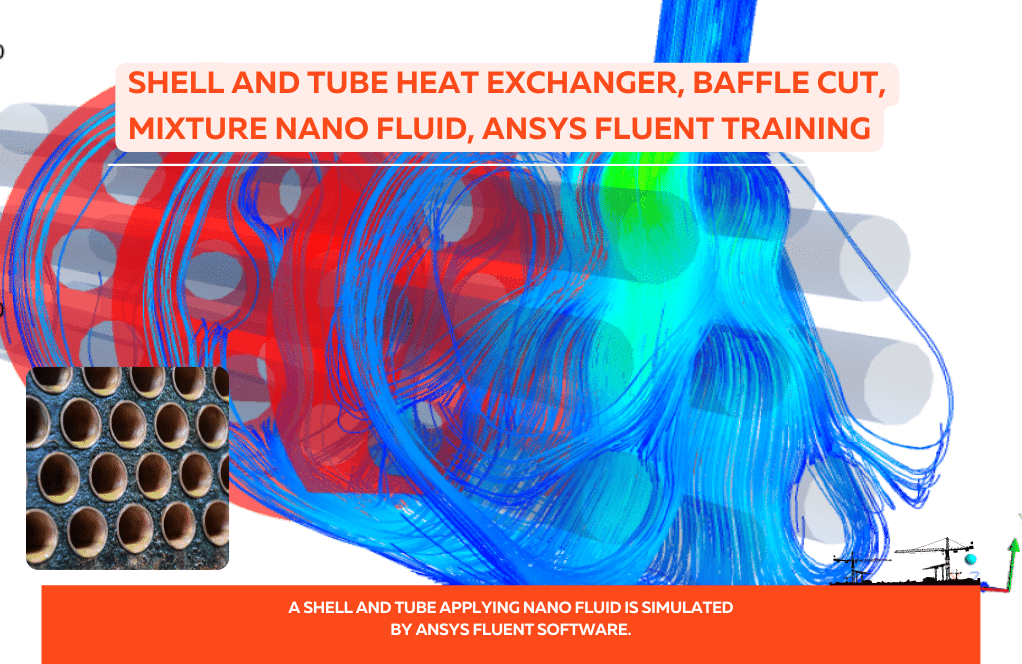Pollutant Dispersion into the Air, CFD Training Package, 6 Projects
Original price was: $820.00.$199.00Current price is: $199.00. Student Discount
- Air pollution within street canyons and real urban zones
- Pollutant Distribution from Car Exhaust
- Pollution dispersion due to the explosion of Oil Storage Tanks
- Gas flare pollutants prediction
To Order Your Project or benefit from a CFD consultation, contact our experts via email ([email protected]), online support tab, or WhatsApp at +44 7443 197273.
There are some Free Products to check our service quality.
If you want the training video in another language instead of English, ask it via [email protected] after you buy the product.
Description
Pollutant Dispersion into the Air Training Package, 6 CFD Projects
This pollutant dispersion into the air training package includes 6 CFD projects to study the air pollution within street canyons and real urban zones, pollutant distribution due to car exhaust in static and traffic (car’s low speed) modes, oil storage tank explosion, and gas flare.
The package includes a comprehensive set of tutorials and exercises to help you understand the fundamentals of CFD and air pollution modeling. It also includes a detailed explanation of the governing equations and boundary conditions used in the simulations. The package also provides a library of pre-defined models and boundary conditions to help you quickly set up and run your simulations.
The Pollutant Dispersion into the Air CFD training package also includes a library of post-processing tools to help you analyze and visualize the results of your simulations. These tools include a range of graphical and statistical analysis tools, as well as a range of visualization tools to help you better understand the results of your simulations.
Finally, the package includes a comprehensive set of resources to help you understand the fundamentals of air pollution modeling and CFD. These resources include a range of books, articles, and videos to help you understand the fundamentals of air pollution modeling and CFD.
We can use CFD (Computational Fluid Dynamics) simulation to model the dispersion of pollutants into the air. we can also use the simulation to predict the concentration of pollutants in the air at different locations and times. We use the simulation to determine the effects of different factors such as wind speed, temperature, and humidity on the dispersion of pollutants.
The simulation can also be used to identify areas where the concentration of pollutants is higher than the acceptable levels. We also use the simulation to identify the sources of the pollutants and to develop strategies to reduce the emission of pollutants.










Magnolia Kautzer –
What a fantastic tool to dive deep into complexities of pollution dispersion! The resources being offered, are they up-to-date with the current pollution control norms and models?
MR CFD Support –
Thank you for the positive feedback! Yes, the resources included in the Pollutant Dispersion into the Air training package are aligned with the latest industry standards and computational modeling techniques to ensure proper application of current pollution control norms and practices.
Ubaldo Bashirian Sr. –
I am very pleased with the Pollutant Dispersion into the Air training package. The variety of projects provided comprehensive insight into urban pollution modeling. The detailed explanations offered throughout the tutorials for boundary conditions and governing equations were incredibly helpful in understanding the complexities of CFD simulations. Thank you for including such helpful visual and statistical tools for post-processing analysis; they certainly enhance our capabilities to interpret the simulated data effectively.
MR CFD Support –
Thank you for your positive feedback! It’s great to hear that our Pollutant Dispersion into the Air training package met your needs comprehensively. Our goal is to provide a thorough learning experience that covers all aspects of CFD modeling, especially in important applications like urban air pollution. If you have any further questions or need additional support, please don’t hesitate to reach out.
Fletcher Crist MD –
The training package seems comprehensive. Are the provided examples sufficient to understand different urban configurations, or do we have to create some simulations from scratch for diverse scenarios?
MR CFD Support –
The provided examples in the Pollutant Dispersion into the Air training package include a variety of urban configurations to help you understand air pollution modeling in different scenarios. You will have the opportunity to work with simulations related to street canyons and real urban zones, among others, which will give you a firm understanding of the wide range of possibilities in CFD pollutant dispersion modeling. While the predefined models offer a strong base, you may still choose to create additional simulations from scratch if you need to study configurations that are not directly covered in the training material.
Dr. Marguerite Renner Jr. –
I recently completed the ‘Pollutant Dispersion into the Air’ training package, and I’m truly impressed with the breadth and depth of content across the 6 CFD projects. Not only did the tutorials consolidate my understandings of CFD and air pollution modeling, but the structured exercises complemented theory with practical application. The inclusion of governing equations and boundary conditions provided clarity on the simulation framework, which was critical for my learning. Furthermore, the post-processing tools were incredibly helpful in analyzing simulation data. I appreciate the comprehensive learning resources that were part of this package; they’ve enhanced my knowledge considerably!
MR CFD Support –
Thank you for your positive feedback! We’re thrilled to hear that our ‘Pollutant Dispersion into the Air’ CFD training package met your expectations and enriched your understanding of air pollution modeling and computational fluid dynamics. Our aim is to provide a complete learning experience that combines theory with hands-on practice. It is great to know our efforts are helping our users further their expertise. If you ever have any questions or need further assistance, please do not hesitate to reach out!
Eli Kuhlman –
I am deeply impressed with the breadth of scenarios covered in the Pollutant Dispersion into the Air CFD Training Package. The range of models from street canyons to oil storage tank explosions offers a powerful toolkit for understanding complex environmental dynamics. Keep up the great work!
MR CFD Support –
Thank you for your kind words! We’re thrilled to hear that our training package met your expectations and provided valuable insights into pollutant dispersion. We are committed to offering high-quality learning materials and are glad you found them useful. If there’s ever more we can do to assist you in your learning journey, feel free to reach out to us. Your success is our priority!
Dr. Berneice Torphy –
I’m pleased with how comprehensive this training package seems. The variety and depth of the projects sound like they provide a thorough understanding of pollutant dispersion in various scenarios. Great work!
MR CFD Support –
Thank you for your kind words! We’re thrilled to hear that you find the Pollutant Dispersion into the Air training package comprehensive and valuable for understanding different pollution scenarios. We pride ourselves in providing detailed learning materials to enhance the CFD learning experience. If you have any further feedback or need assistance as you work through the projects, do not hesitate to reach out!
Carrie Daugherty II –
Absolutely one of the most detailed and informative training packages I’ve worked through! The post-processing tools were especially helpful in understanding the pollutant dispersion. The visualization tools provided clarity that was far beyond my expectations.
MR CFD Support –
We are thrilled to hear that our Pollutant Dispersion into the Air CFD training package met your expectations! Thank you for acknowledging the depth and the usefulness of the post-processing tools. Your satisfaction inspires us to continuously improve our learning materials.
Patsy Stracke –
The comprehensive tutorials and practical projects on pollutant dispersion were truly insightful. They provided a thorough understanding of setting up simulations correctly and interpreting the results that are vital for environmental assessments.
MR CFD Support –
Thank you for your positive feedback! It’s great to hear that the pollutant dispersion training package has enhanced your understanding of CFD applications in environmental assessments. We’re glad that our tutorials and projects have been instrumental for your learning experience.
Scarlett Borer –
I’ve found the array of topics covered incredibly insightful for understanding urban air pollution dynamics. Could you perhaps elaborate on which specific CFD models and turbulence equations are utilized within these projects for pollutant dispersion analysis?
MR CFD Support –
The CFD models and turbulence equations used for pollutant dispersion analysis vary depending on the specific project and conditions simulated, but typically models like the k-epsilon model, the k-omega model, and Reynolds Averaged Navier Stokes (RANS) equations are common choices. Turbulence is critical in determining how pollutants disperse in the atmosphere, affecting their concentration and impact. The training package likely delves into the applications and settings of each model where appropriate.
Antonina Abernathy IV –
I’m really impressed with how comprehensive this package seems, is there any support offered if I get stuck with one of the projects?
MR CFD Support –
Yes! Our training package includes full technical support to assist learners who may encounter difficulties with any of the projects. Our experienced team is readily available to guide you through your tasks and ensure a smooth learning experience.
Gay Littel –
I purchased the Pollutant Dispersion into the Air CFD Training Package. In which project does it demonstrate how the wind speed affects the pollutant dispersion in an urban area?
MR CFD Support –
In the Pollutant Dispersion into the Air training package, the effect of wind speed on the dispersion of pollutants in urban areas is particularly demonstrated in the projects that involve air pollution modeling within street canyons and real urban zones. These projects are designed to help you study the influence of varying wind velocities, building arrangements, and traffic conditions on how pollutants spread in a city environment.
Parker Tromp DVM –
I just completed the ‘Pollutant Dispersion into the Air’ training package and found the tutorials quite immersive. Your pre-defined models saved me tons of time!I have managed to use the post-processing tools effectively but wonder if you have more advanced resources for analysis of complex areas such as irregular topography?
MR CFD Support –
Thank you for your feedback! We’re thrilled to hear that our pre-defined models and post-processing tools have been beneficial in your CFD learning process. To answer your question, yes, we do offer advanced resources that might be perfect for analyzing pollutant dispersion in sophisticated scenarios such as irregular topography. These resources provide you with more in-depth techniques to handle complex geometries and to adapt your simulations to reflect these variations accurately.
Hosea Bruen –
I’ve had a phenomenal experience going through the ‘Pollutant Dispersion into the Air’ training package. The inclusion of various case studies like street canyons and real urban zones addressed complex scenarios comprehensively. Moreover, the simulations of pollutant distribution in static and traffic conditions, as well as extreme cases like an oil storage tank explosion, were simulative of real-world environmental engineering challenges. I particularly appreciated the extensive library of resources and the post-processing tools that effectively demonstrated the pollutant dissemination. This package definitely contributes to a hands-on understanding of environmental conservation during fluid dynamics assessments. Highly recommended!
MR CFD Support –
Thank you so much for your detailed review and thoughtful comments! We are thrilled to hear that you found the ‘Pollutant Dispersion into the Air’ CFD training package comprehensive and effective. The inclusion of real-world scenarios is indeed crafted to offer in-depth learning and practical simulation experiences. It is wonderful to know that the resources and tools provided have significantly contributed to your understanding of the critical role of CFD in environmental conservation. If you have any further feedback or require additional insights, please do not hesitate to reach out to us. We appreciate your recommendation and are glad you had a positive experience!
Muriel Watsica –
I’ve learned a lot from the pollutant dispersion training package. The clear explanations and the pre-defined models made it easier to understand CFD’s role in predicting air pollution in urban environments. Using the tools has improved my data visualization skills significantly!
MR CFD Support –
Thank you for your positive feedback! We’re thrilled to hear that the training package has been beneficial for your understanding of CFD and air pollution modeling. It’s great to know that the resources provided have enhanced your data visualization skills. If you have any further questions or need assistance with future simulations, don’t hesitate to reach out!
Dr. Lorine Hackett –
I’m deeply impressed by the level of detail and the wide variety of scenarios covered in this training package. Having the option to learn through multiple hands-on projects has definitely enhanced my understanding of pollutant dispersion in various urban contexts.
MR CFD Support –
Thank you for your kind words! We are delighted to hear that our training package has provided you with valuable hands-on experience and a better understanding of pollutant dispersion. We aim to offer comprehensive and practical CFD learning tools, and it’s wonderful to know we are achieving that. If you have any questions or need further assistance as you continue your CFD journey, please don’t hesitate to reach out!
Reilly Legros –
The package you’ve described sounds comprehensive. Do the provided tutorials cover hands-on examples of how to adjust key parameters, such as emission rate or weather conditions, to see their impact on pollutant dispersion in urban environments?
MR CFD Support –
Yes, the tutorials in our training package include step-by-step guidance on how to adjust various parameters, such as emission rates, and atmospheric conditions like wind speed and direction. This enables users to comprehensively study the effects of changes in these conditions on pollutant dispersion within urban settings.
Jonathon Schaden PhD –
I’m impressed by the range of topics covered in this training package. The tools for post-processing analysis seem particularly valuable. Will the package also include examples of how to interpret simulation data for real-life urban planning applications?
MR CFD Support –
We are glad to hear that you find the training package impressive and are finding the post-processing tools valuable. Indeed, the package includes case studies and examples which illustrate how to interpret simulation data and how it can be applied to real-life urban air quality management and urban planning strategies. These examples aim to help learners understand the practical implications of CFD simulations in assessing and managing air pollution in urban environments.
Roxane Paucek –
This training package was incredibly detailed and helpful. It allowed me to understand critical aspects of pollutant dispersion in various scenarios. The inclusion of different projects provided a well-rounded experience.
MR CFD Support –
Thank you for your positive feedback! We’re delighted to hear that you found the training package comprehensive and educational. Understanding the dynamics of pollutant dispersion is crucial, and we’re glad our projects contributed significantly to your learning experience.